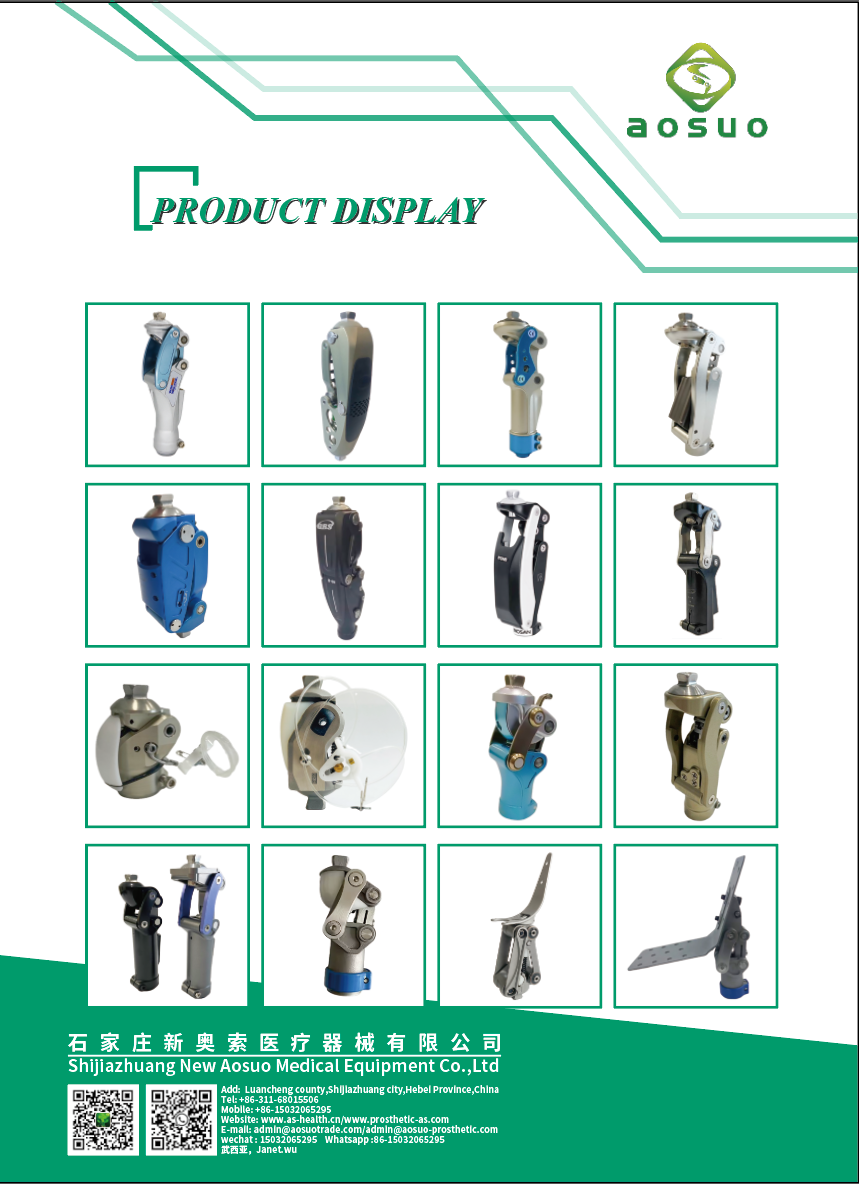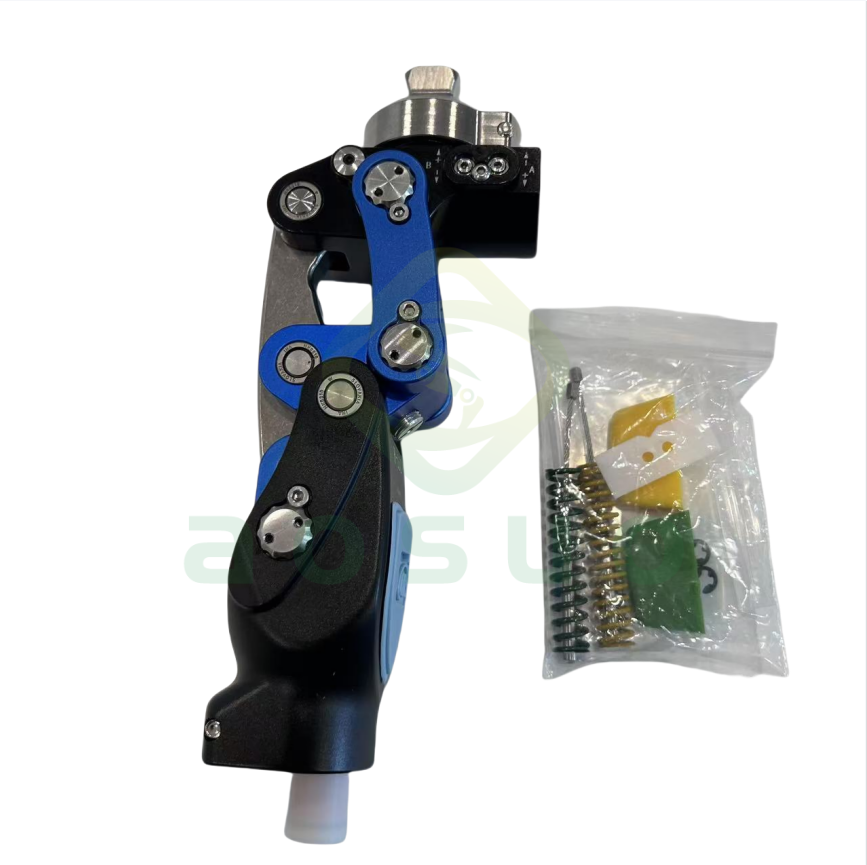Understanding the Cost Factors of Prosthetic Leg Parts: A Comprehensive Guide
Release Time:
Jul 06,2025
Understanding the Cost Factors of Prosthetic Leg Parts Prosthetic legs are essential for individuals who have lost limbs, providing mobility and a renewed sense of independence. However, the costs associated with prosthetic leg parts can vary significantly, influenced by numerous factors ranging from materials used to customization options. In this article, we will explore the various cost factors
Understanding the Cost Factors of Prosthetic Leg Parts
Prosthetic legs are essential for individuals who have lost limbs, providing mobility and a renewed sense of independence. However, the costs associated with prosthetic leg parts can vary significantly, influenced by numerous factors ranging from materials used to customization options. In this article, we will explore the various cost factors that contribute to the overall price of prosthetic leg parts, ensuring you have a clearer understanding of what to expect when considering these medical devices.
The Significance of Prosthetic Legs in Modern Healthcare
Prosthetic legs play a crucial role in restoring the quality of life for amputees. They not only facilitate mobility but also enhance self-esteem and social participation. The advancements in technology and materials have made prosthetics more accessible and efficient, but they come at a cost. Understanding these costs is vital for patients, caregivers, and healthcare providers alike.
Cost Breakdown of Prosthetic Leg Parts
To comprehend the overall cost of prosthetic leg parts, it is essential to dissect the individual components involved. Here, we will break down the key elements that influence costs.
1. Materials Used in Prosthetic Leg Parts
The materials selected for constructing prosthetic legs significantly impact their cost. Common materials include:
- **Aluminum**: Lightweight and resistant to corrosion, aluminum is often used in the structural framework. It provides a balance between durability and weight, making it an ideal choice for prosthetics.
- **Carbon Fiber**: Known for its strength and lightness, carbon fiber is a premium material that enhances performance but comes with a higher price tag.
- **Plastic**: Used in various components, high-strength plastics can be cost-effective while still providing necessary support and durability.
- **Titanium**: Although it is one of the most expensive materials, titanium offers exceptional strength and biocompatibility, making it suitable for high-performance prosthetics.
Understanding the costs associated with different materials can help patients choose options that best fit their budgets while meeting their functional needs.
2. Manufacturing Processes and Technology
The manufacturing process of prosthetic legs plays a significant role in determining their price. Factors include:
- **3D Printing**: Emerging technologies like 3D printing can lower production costs and allow for rapid prototyping and customization. However, not all prosthetics are made using this method, and costs can still vary based on design complexity.
- **Traditional Manufacturing**: Conventional manufacturing techniques may involve more labor and longer production times, influencing overall costs.
- **Customization**: Bespoke prosthetics tailored to individual needs generally entail higher costs due to the extensive fitting and design processes involved.
Evaluating the manufacturing approach can give insights into why certain prosthetic legs may be priced higher than others.
3. Customization and Fitting
A significant portion of the cost of prosthetic legs arises from the customization and fitting processes. Each individual's anatomy and lifestyle requirements necessitate personalized adjustments, which can drive up expenses. Considerations include:
- **Initial Assessment**: The assessment phase requires skilled professionals to determine the appropriate size, shape, and functionality needed for an effective prosthetic.
- **Adjustments and Modifications**: Post-fitting adjustments may be necessary as individuals adapt to their new prosthetics, adding to the overall cost.
- **Follow-Up Care**: Regular follow-ups are essential to ensure the prosthetic is functioning correctly and to make any necessary modifications, further impacting long-term expenses.
Investing in a well-fitted prosthetic is crucial for comfort and functionality, but it also contributes to the overall cost.
4. Technology Integration in Prosthetic Legs
The integration of advanced technology into prosthetic legs has revolutionized their functionality. Smart prosthetics equipped with sensors and microprocessors are becoming increasingly popular, but these high-tech options come at a premium. Features may include:
- **Microprocessor-Controlled Knees**: These devices can adapt to various terrains and walking speeds, enhancing mobility but significantly increasing costs.
- **Smart Sensors**: Some prosthetic legs are equipped with sensors that monitor gait and provide feedback, which can help improve the user’s walking experience.
- **Connectivity Features**: Many modern prosthetics can connect to smartphones or other devices, allowing for real-time monitoring and adjustments.
While technological advancements improve performance, they also contribute to the overall price of prosthetic legs.
5. Insurance Coverage and Financial Assistance
Insurance coverage plays a pivotal role in determining the out-of-pocket costs for prosthetic leg parts. Key points to consider include:
- **Coverage Variability**: Different insurance plans have varying levels of coverage for prosthetics. Understanding your policy’s benefits is crucial.
- **Pre-Approval Requirements**: Some insurers may require pre-approval for prosthetic parts, which can delay the process and incur additional costs.
- **Financial Aid Programs**: Non-profit organizations and foundations may offer financial support for those who qualify, helping to offset costs.
Navigating insurance and financial assistance can significantly impact the overall cost of prosthetic leg parts.
6. Maintenance and Replacement Costs
Prosthetic legs, like any other medical device, require maintenance and eventual replacement. Understanding these costs is crucial for long-term budgeting. Factors to consider include:
- **Routine Maintenance**: Regular check-ups and minor repairs can add to the overall cost of ownership.
- **Longevity of Parts**: The average lifespan of prosthetic components varies, with some needing replacement every few years. Knowing when to replace parts is essential to avoid unexpected expenses.
- **Wear and Tear**: Active users may experience more wear on their prosthetics, necessitating more frequent repairs or replacements.
Being aware of maintenance and replacement costs can help individuals plan for the future.
Comparing Costs: Different Types of Prosthetic Legs
Prosthetic legs come in various types, each with its associated costs. Understanding these options can help individuals make informed choices.
1. Basic Prosthetic Legs
Basic prosthetic legs are typically the most affordable option, often made from standard materials with limited customization features. Although they may lack advanced functionality, they serve as a reliable choice for many users.
2. Advanced Prosthetic Legs
Advanced prosthetic legs incorporate cutting-edge technology and materials. They tend to be more expensive but offer benefits such as improved mobility and comfort. Individuals who lead active lifestyles may find that investing in advanced options is worthwhile for long-term satisfaction.
3. Bionic Prosthetic Legs
Bionic prosthetics represent the pinnacle of technology in this field, featuring sophisticated microprocessors and sensors. While they provide unparalleled functionality and adaptiveness, they also come with the highest price tags. These prosthetics are ideal for those looking for the latest innovations and are willing to invest significantly.
Conclusion: Making Informed Decisions About Prosthetic Leg Costs
Understanding the cost factors associated with prosthetic leg parts is essential for individuals navigating their options. From materials and manufacturing processes to customization and insurance coverage, several elements contribute to the overall expense. As technology continues to advance, the range of choices expands, allowing individuals to find prosthetics that meet their unique needs and budgets.
Ultimately, making informed decisions about prosthetic legs not only enhances mobility and independence but can also ensure that individuals receive the support they need throughout their journey. By considering all aspects of cost, patients can choose options that align with their lifestyles and financial situations, paving the way for a more fulfilling life post-amputation.
Frequently Asked Questions (FAQs)
1. What is the average cost of a prosthetic leg?
The average cost of a prosthetic leg can range from $5,000 to over $100,000, depending on the type, materials, and customization required.
2. Does insurance cover prosthetic legs?
Many insurance plans provide some coverage for prosthetic legs, but the extent of coverage varies. It is essential to check with your provider for specific details.
3. How often do prosthetic legs need to be replaced?
The lifespan of a prosthetic leg can vary, but many components may need replacement every 3 to 5 years, depending on usage and wear.
4. Are there financial assistance programs for prosthetic legs?
Yes, various non-profit organizations and foundations offer financial assistance for individuals needing prosthetic legs. Researching available programs can provide valuable support.
5. What factors influence the cost of prosthetic legs the most?
Key factors influencing the cost of prosthetic legs include materials used, manufacturing processes, customization needs, and technology integration.
Keywords:
You Can Also Learn More About Industry Trends






